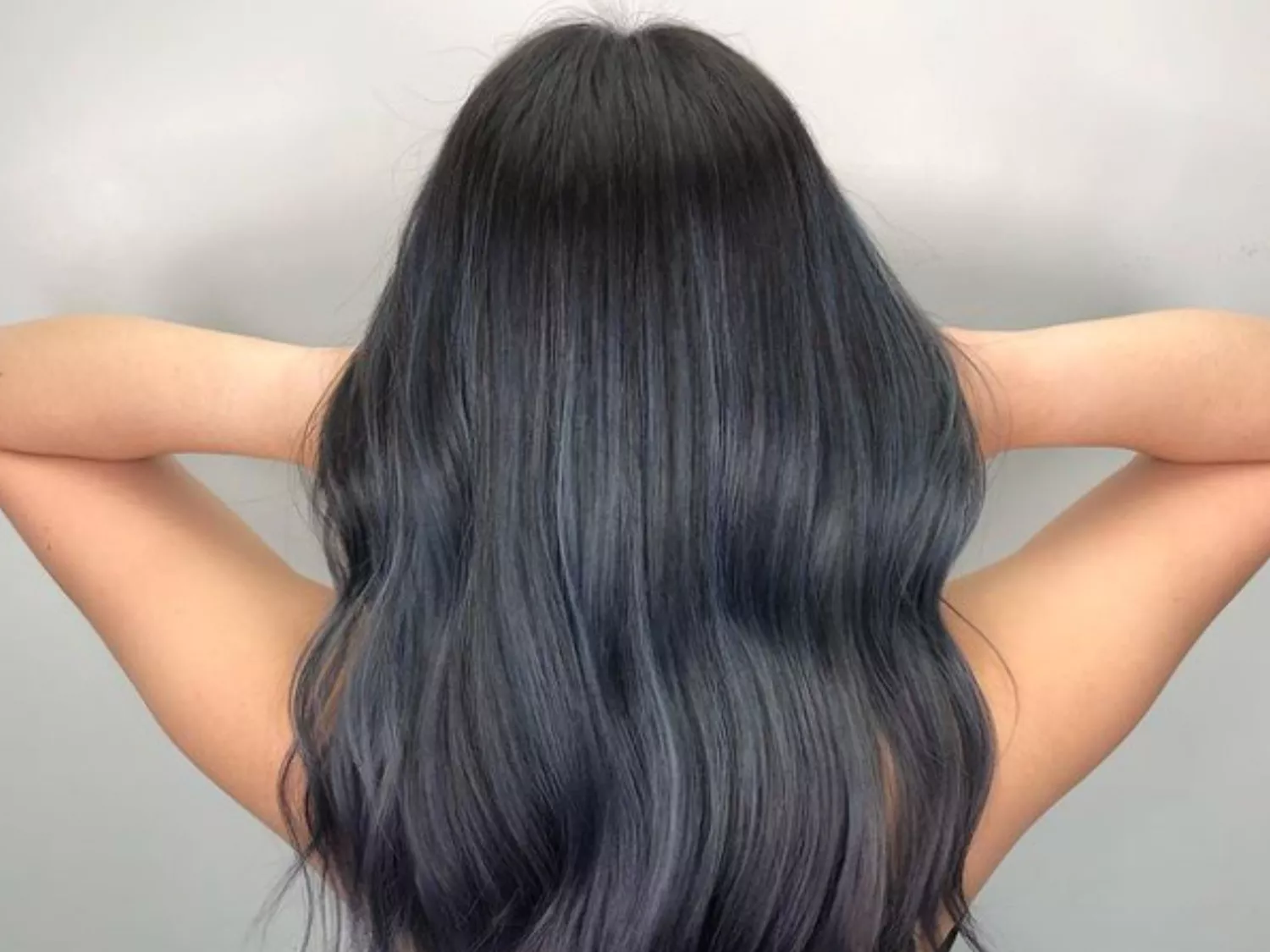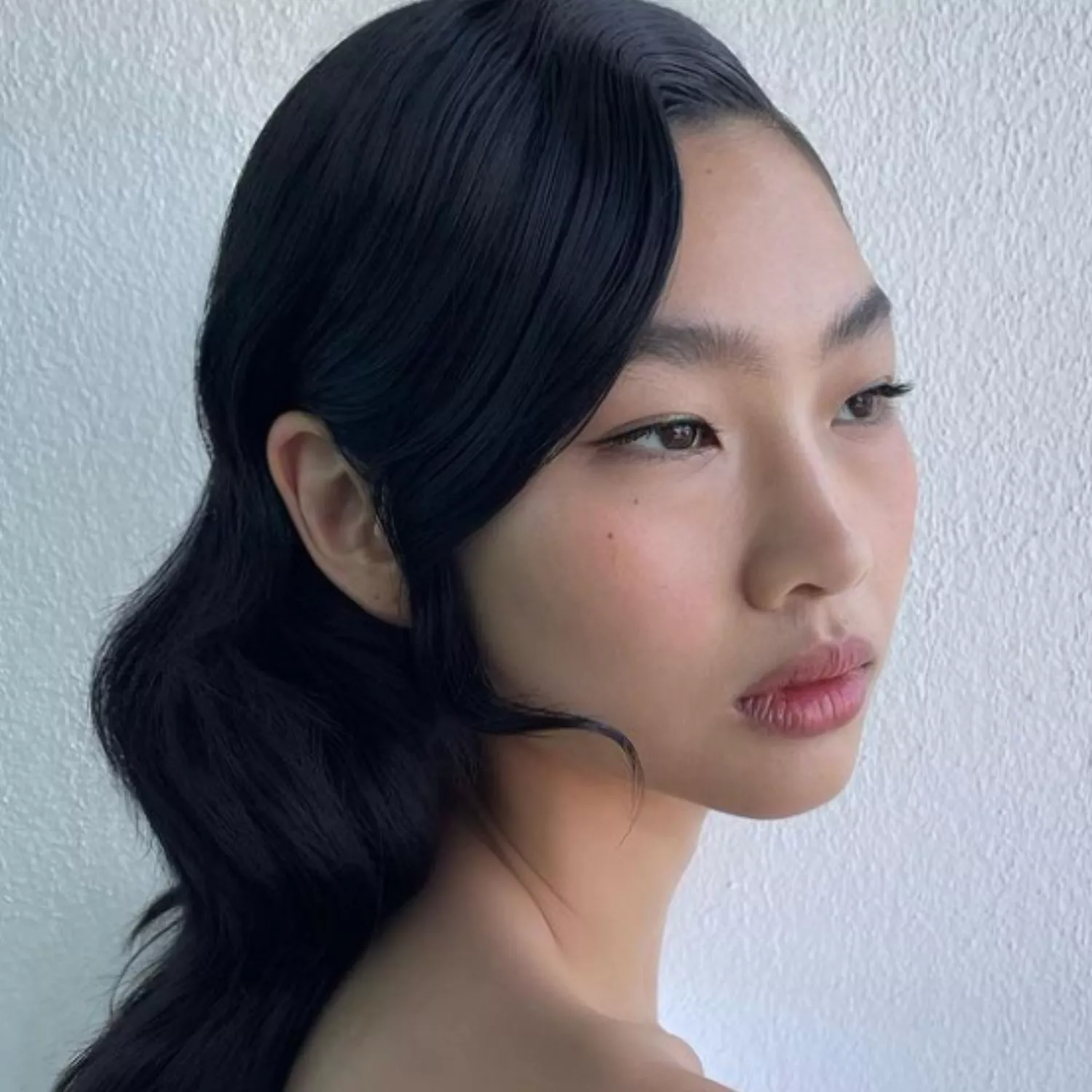
@xcellentbeautysalon/Instagram
Weve always had a soft spot for grunge beauty. It harkens back to a time, circa the early 1990s, when some of our favorite celebs (Winona Ryder, Drew Barrymore, Kate Moss) regularly donned ultra-cool-toned hues—think smoky eyes and brown lips. And this fall, were bringing all those moody vibes to our hair, thanks to the blue-black hair trend.
Seen on the likes of Katy Perry and Kendall Jenner, blue-black hair is equal parts chic, goth, sophisticated, and somehow effortless. But it can also be difficult to nail—its more of a spectrum than a single tone and is endlessly customizable. With the color poised to pop up everywhere this coming autumn, we tapped expert colorists Matt Rez and Chase Kusero to learn everything there is to know about getting and maintaining blue-black hair.
What Is Blue-Black Hair?
If you think of the different variations and tones of black hair color as existing on a spectrum, blue-black lives toward the end. "Blue-black hair is the darkest color that one can go for," says Rez. "Its black in color and has a blue tone to it—there are no red or warm undertones." Its important to note the hue does, in fact, differ from traditional black hair, which does not have an undertone, according to Kusero.
Blue-black is similar to midnight-black hair but with far more variety. As far as blue-black colors go, the blue undertones or lowlights can be turned up or down as preferred. For example, it can be as subtle as Camila Mendes pitch-black hair, which only really gives off that blue tinge in the right light, or as overt as actual blue highlights weaved into black hair.
Wavy Navy

@evalam_ / Instagram
"Its a striking and bold shade without being overly dramatic," Kusero says of the resurgence of blue-black hair. "Its a way for people to make a statement with their hair without going over the top."
Rich Black

@colorbymattrez/Instagram
According to Rez, blue-black colors work well with olive and golden undertones—look no further than his dye job on Gal Gadot for proof.
Classic Blue-Black

@camimendes / Instagram
When asked about blue-black hair, Rezs mind immediately went to Camila Mendes—no surprise, given the two often work together. To maintain that reflective, deep tone, he suggests going to the salon for a gloss about every six weeks.
Blue-lights

@xcellentbeautysalon/Instagram
Traditional black-blue shades dont always feature actual blue. Instead, they tend to have a tinge of blue when light reflects off the hair. But that doesnt mean you cant add some true-blue touches. Were big fans of this highlight-style take on the look.
Sideswept Midnight

@jennychohair/Instagram
"Midnight black is a darker shade of black hair with a blue undertone," Kusero says. "This is different from traditional black hair, which does not have any undertone." He also notes that the hue is particularly striking on softer, pale skin tones since it creates contrast.
Blue Ombré

@xcellentbeautysalon/Instagram
Somewhere between subtle and bold lies this chic interpretation of blue-black hair. With a slight ombré effect and tinges of gray, its perhaps the most neutral take on blue hair weve ever seen.
Deep Blue-Black

@charmthestylist_/Instagram
According to Kusero, maintenance levels depend on your hairs porosity: "If the hair is more porous, it is more prone to fading," he explains. "To maintain the color for as long as possible, Id recommend using the proper hair care products. You should follow a schedule of three to four weeks for root touch-ups, depending on the rate of hair growth."
Natural Blue-Black

@mizzchoi/Instagram
Before you go blue-black, be sure youre ready to commit—because it is a commitment. "Whether glossing or going permanently blue-black, this color stains and is very hard to get out," Rez shares. "If you are not sure you want to commit long term, gloss or do a demi-permanent blue-black. Thats easier to remove."
Close-Crop Blue-Black

@jennychohair/Instagram
For a more subdued take on the trend, Rez suggests opting for blue-toned black hair over a true mix of the two. As far as styling, anything goes with blue-black hair. Per Rez, the rich tone bounces light and reflects beautifully, so it looks as great with a close crop as it does with hip-length tendrils.
Fluffy Blue Tones

@charmthestylist_/Instagram
To maintain the rich, dark color, Kusero suggests opting for hydrating shampoos and conditioners—and be sure to throw in an at-home glaze every few washes to keep that shine.
Icy Blue

@xcellentbeautysalon/Instagram
For this shade, the colorist weaved icier shades of blue into true black hair. This creates more contrast than traditional blue-black tones without reading too brightly colored.
Blue-Black Bob

@colorbymattrez/Instagram
Kusero offers this tip: "Its important to consider if you can pull off platinum blonde hair because if you can, you most likely can pull off midnight blue-black hair."
These Are the Best Black Friday Deals You Can Shop Right Now